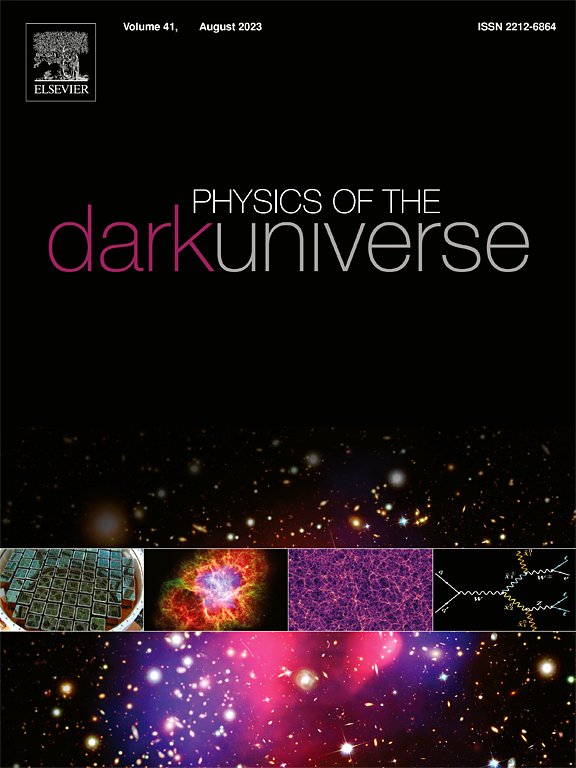QPO tests and charged particles around regular Ayón-Beato-Garcia black holes
IF 6.4
2区 物理与天体物理
Q1 ASTRONOMY & ASTROPHYSICS
引用次数: 0
Abstract
In this work, we use an Ayón-Beato-Garca (ABG) black hole solution (BH) obtained in GR coupled to nonlinear electrodynamics (NED), which is regular with the electric charge that could be a candidate astrophysical black hole. First, we derive an expression for the scalar electric field potential. Then, we investigate the circular motion of electrically charged particles using the Hamilton–Jacobi formalism, including the effective potential for circular motion, energy, and angular momentum for circular orbits, as well as the innermost circular orbits (ISCOs). Using equations of non-geodesic motion, we derive equations for radial and angular oscillations and apply them to quasi-periodic oscillations (QPOs) around the ABG BHs. We provide Monte-Carlo-Markov-Chain (MCMC) analyses using QPO data observed around three stellar-mass candidates in the microquasars XTE J1550-564, GRO J1655- 40, and GRS 1915+105, and also the data around an intermediate-mass black hole in the ultraluminous galaxy M82 X-1 and supermassive black hole SgrA* in the Milky Way galaxy. The obtained results demonstrate how the ABG black hole solution can describe astrophysical black holes and enhance the theoretical understanding of QPOs near the black hole, providing insights into the underlying physical mechanisms that govern the motion of charged particles.
QPO测试和正常Ayón-Beato-Garcia黑洞周围的带电粒子
在这项工作中,我们使用了在GR中耦合非线性电动力学(NED)得到的Ayón-Beato-Garca (ABG)黑洞解(BH),该解与可能成为候选天体物理黑洞的电荷规则。首先,我们推导出标量电场势的表达式。然后,我们利用Hamilton-Jacobi形式研究了带电粒子的圆周运动,包括圆周运动的有效势、能量和圆轨道的角动量,以及最内层圆轨道(ISCOs)。利用非测地线运动方程,导出了径向和角振荡方程,并将其应用于ABG BHs周围的准周期振荡(QPOs)。利用QPO观测到的三个恒星质量候选微类星体XTE J1550-564、GRO J1655- 40和GRS 1915+105周围的数据,以及超亮星系M82 X-1中质量黑洞和银河系超大质量黑洞SgrA*周围的数据,进行了蒙特卡罗-马尔可夫链(Monte-Carlo-Markov-Chain, MCMC)分析。获得的结果证明了ABG黑洞解如何描述天体物理黑洞,并增强了对黑洞附近QPOs的理论认识,为控制带电粒子运动的潜在物理机制提供了见解。
本文章由计算机程序翻译,如有差异,请以英文原文为准。
求助全文
约1分钟内获得全文
求助全文
来源期刊

Physics of the Dark Universe
ASTRONOMY & ASTROPHYSICS-
CiteScore
9.60
自引率
7.30%
发文量
118
审稿时长
61 days
期刊介绍:
Physics of the Dark Universe is an innovative online-only journal that offers rapid publication of peer-reviewed, original research articles considered of high scientific impact.
The journal is focused on the understanding of Dark Matter, Dark Energy, Early Universe, gravitational waves and neutrinos, covering all theoretical, experimental and phenomenological aspects.
 求助内容:
求助内容: 应助结果提醒方式:
应助结果提醒方式:


